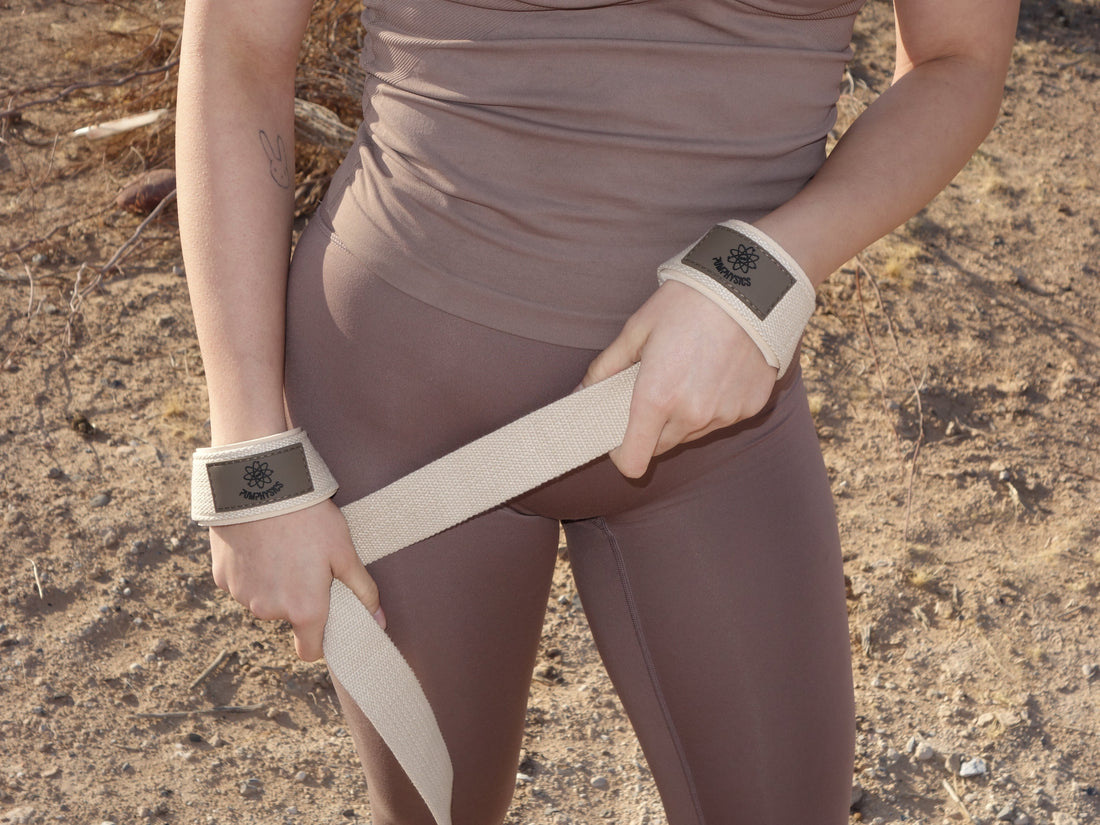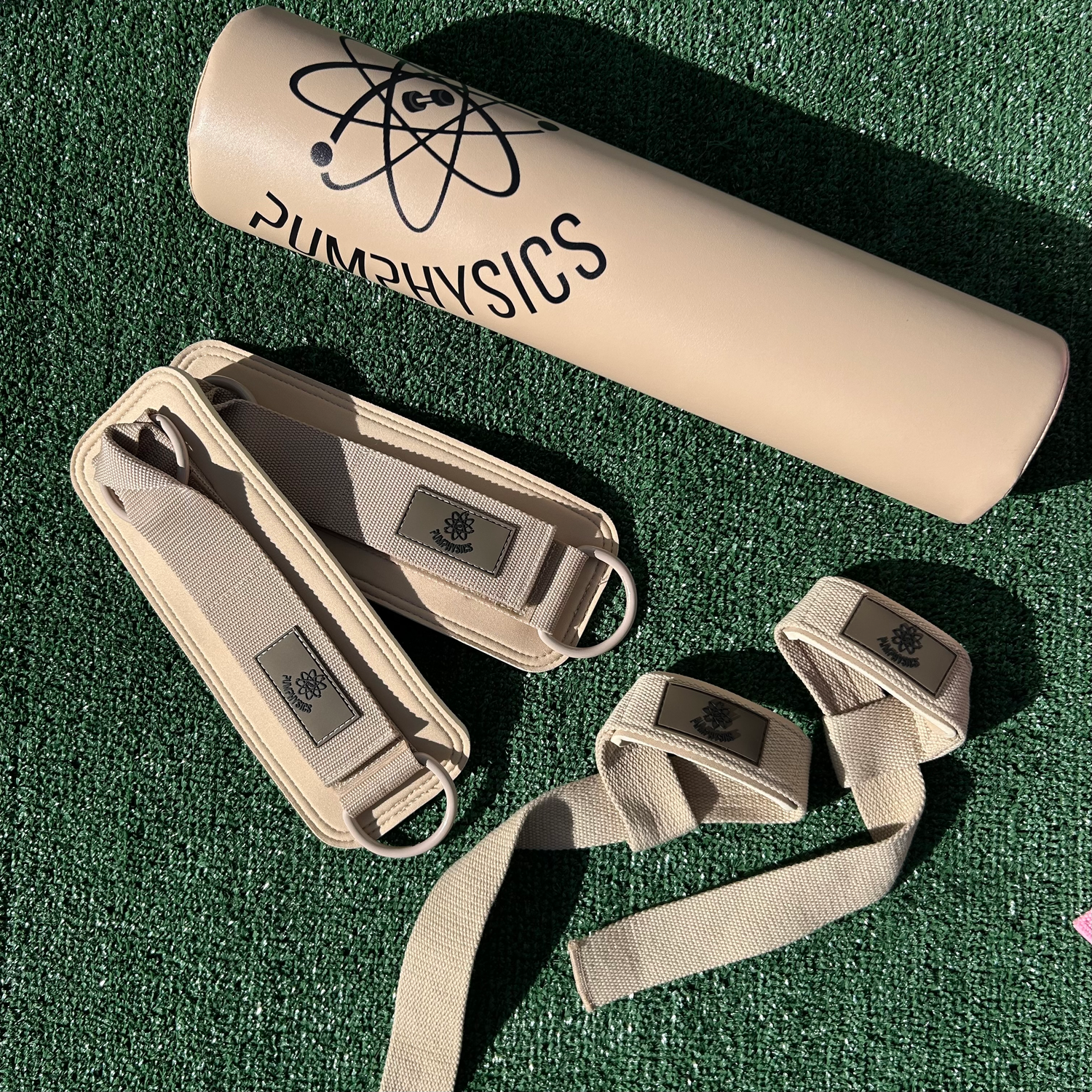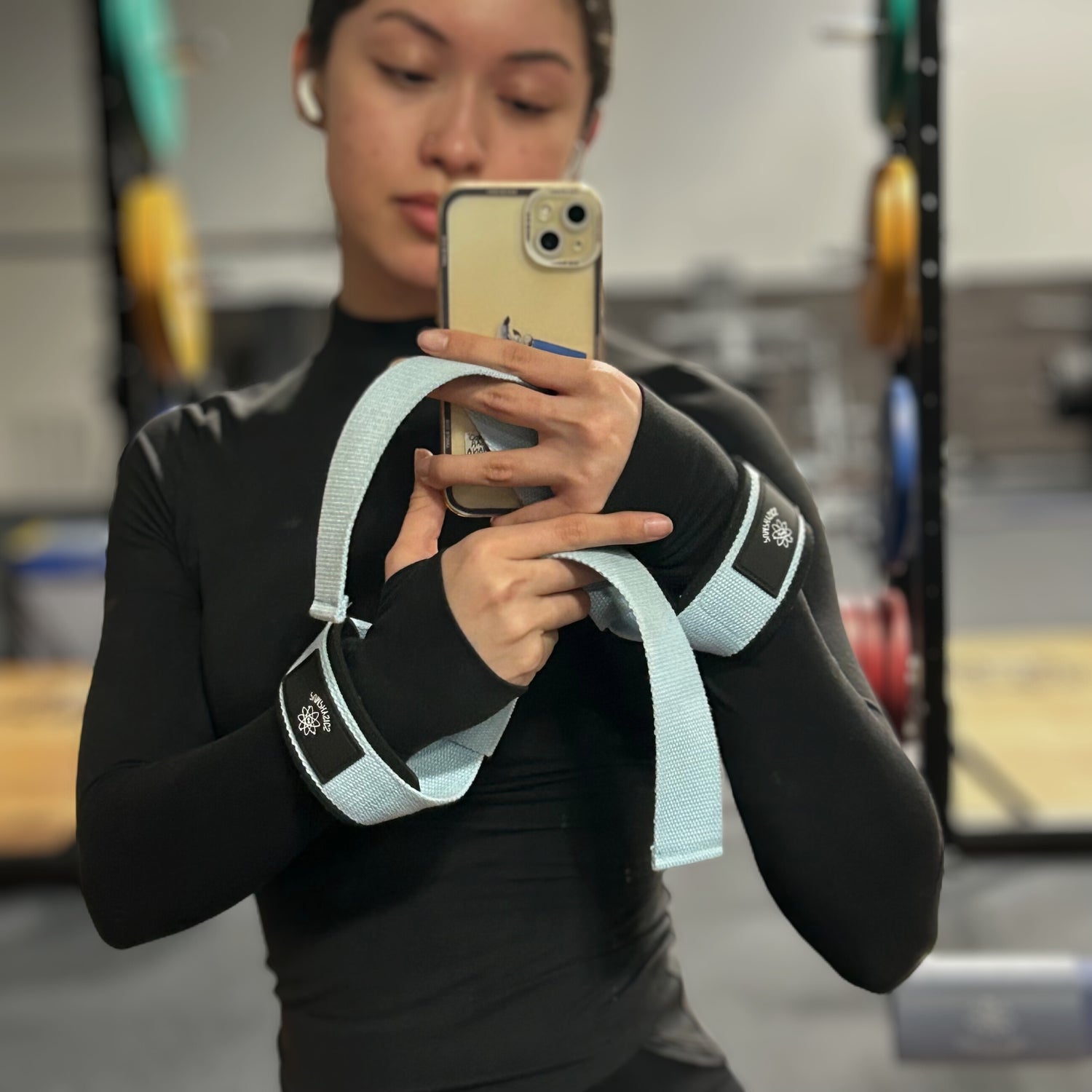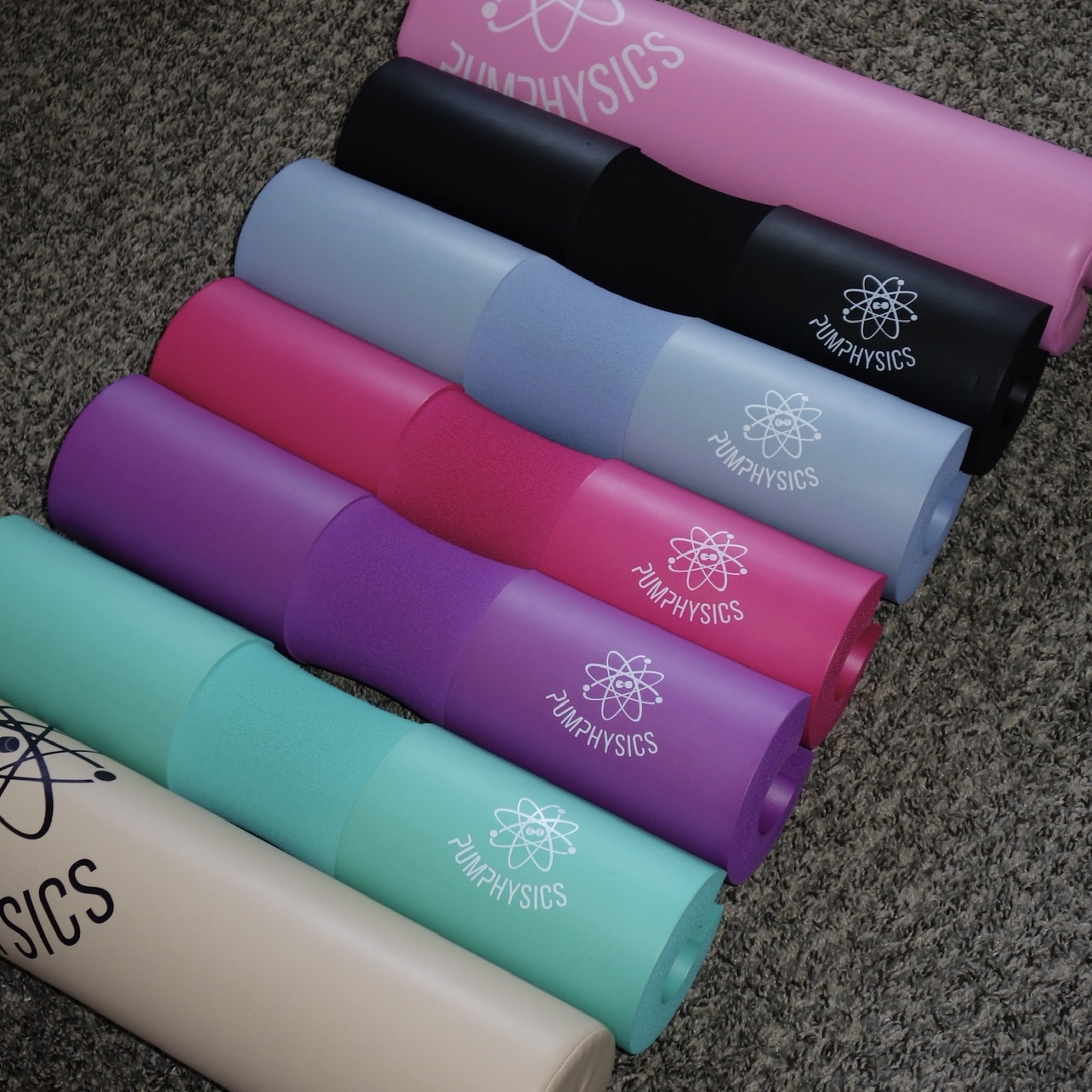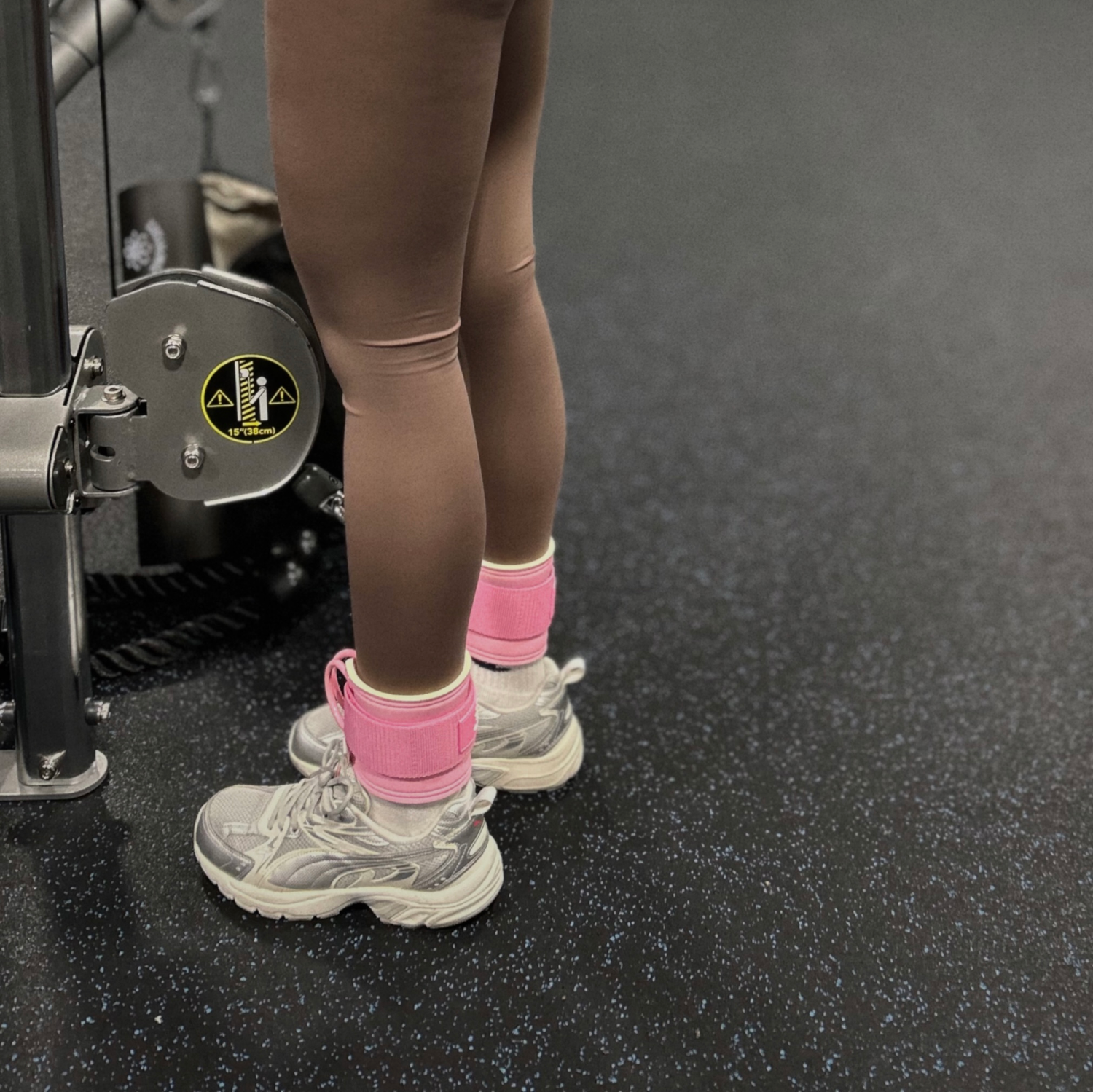Have you ever felt a moment where your grip gives out before your muscles do? Perhaps when doing deadlifts, or shoulder shrugs for example? It is very inconveniencing because in order to grow our muscles, we must push ourselves to our limit--but there is a quick fix to it! Lifting straps are an easy and affordable tool you can implement into your workout routine to help you train until failure with no grip issues whatsoever. Let's dive into what these are, and at what point in your lifting journey you may need them.

What Are Lifting Straps?
Lifting straps are pieces of fabric that are specifically built for weightlifting and allow for better grip when performing exercises that involve pulling movements (deadlifts, lateral pulldowns, pull ups, shoulder shrugs, etc). The most popular type of lifting straps are the traditional kind, also known as lasso straps. They are super versatile, mostly easy to use (with a possible exception of first time users), and budget friendly. However, there are more luxury options, like figure 8 straps, hooks, and lifting grips, which can be just as practical but less cost-friendly.
To further dig into the popular, traditional type of lifting straps, these are typically made of nylon, cotton, and/or leather materials which make it great for comfort, durability, and sweat. Set up typically takes less than a minute--all you have to do is loop one side of the strap into the other, and slide your hand into the opening. The long part of the strap wraps around the bar you are gripping and you are ready to lift! You can watch this short video on TikTok that gives an in-depth tutorial on set up for traditional straps:
https://www.tiktok.com/@pumphysics/video/7463588236338662687

What Do Lifting Straps Help With?
As you progress in your gym journey, you tend to experience that at some point, your legs can handle deadlifting a heavy weight, or your back can handle pulling heavy, but your grip muscles fatigue as they cannot keep up. However, this is very normal! Leg and back muscles are very obviously bigger than muscles in your hands, forearm, and wrist area.
Even on the first time using straps, you'd easily be able to perform even a few more repetitions than you are normally able to! Straps allow for a better focus on the primary muscles you are trying to target. A better focus on the muscle you are working may lead to better form, or reduced risk of injury as well, resulting in better performance within your workouts. Just a few of many exercises these may help with are deadlifts, rows, shrugs, Romanian deadlifts, and more.
Another pro to these is that they prevent calluses from forming on your hands. Some people do not mind these, yet others would rather not have them. If you are one of those who would rather prevent calluses, it is just another reason as to why lifting straps may be a good addition for you.
Keep in mind that as a beginner, you may not need these at first as you are beginning with learning form and not focusing on lifting heavy weights. However, over time as you begin to lift heavier, it may be a good investment to make!


Lifting Straps vs Wrist Wraps
A common (but valid) misconception when it comes to gym accessories are lifting straps being confused with wrist wraps, or vice versa. These are two very different accessories; quite the opposite actually. This is just an FYI so you never end up purchasing the wrong product!
As we mentioned before, lifting straps are designed for pulling movements. Keeping this in mind, wrist wraps are designed for the opposite--push movements. When making a decision on which one you are looking to purchase for your specific needs, know that wrist wraps are made for exercises that involve chest, shoulders, and triceps, and are meant to stabilize your wrists, not grip weight like lifting straps.
When to NOT use straps
Let's be real--these are not meant for everyone in the weightlifting community. For example, these are not necessarily a must-have for beginners. Beginners should typically have no issues with grip when beginning their journey due to low weights, and to avoid muscle imbalances, should keep using bare hands to strengthen grip as the rest of your muscles grow as well. Once you reach that point where grip is affecting your ability to lift heavier, it is time to get straps.
Furthermore, keep in mind to not be over-reliant on them. Using straps too often, especially when not necessary, will weaken your grip strength and cause weaker hands. Some people may not mind weaker grip, which is totally optional, but for those who want to keep as much forearm and grip strength as possible, try to only use straps when necessary.
Lastly, do not use these when performing exercises when doing a exercise that should not restrict wrist movement. Exercises like cleans or snatches are ones that may require one to bail out suddenly, and using lifting straps in such exercise would not be ideal.
If you do find your grip getting weaker, or simply want to lift more without excessive use of lifting straps, these are plenty of exercises you can do for your forearms to help increase strength (like dead hangs or reverse wrist curls).
Where To Buy Lifting Straps?
Right here! Pumphysics offers traditional lifting straps at just $12 or $14 a pair in select colors.






To Recap:
Lifting straps are an easily accessible and affordable tool that could potentially drastically improve your lifts in the gym. Straps are most convenient when needed extra grip when performing specific exercises. The said exercises these are best for are ones like deadlifts, a variety of back workouts, shrugs, and more. Just remember to use them wisely as we do not want to be over-reliant on them!
Just remember that when you are in need of a pair, PUMPHYSICS offers a variety of colors of soft to the skin, durable lifting straps! If this information has you decided on getting a pair, here's a quick link to our lifting strap products for your convenience!

